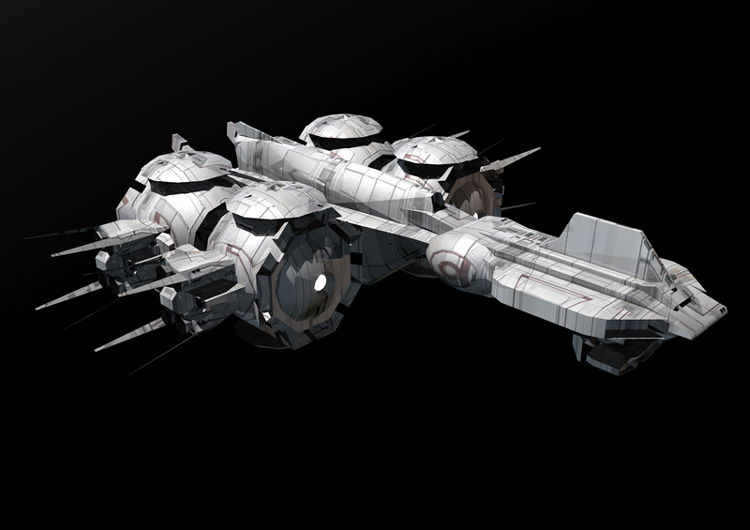...
Just stop it. No. There are no "aliens" here. They aren't visiting us in their cool little spaceships, they aren't abducting hillbillies and subjecting them to all sorts of proctological research, and most importantly, they haven't come here for our resources, our planet, or lunch. They are not here.
How can I be so sure?
Look. We've been suspending our disbelief for so long now, from the guys who went to the moon with a cannon to Flash Gordon to Captain Kirk to Battle:Los Angeles that we've forgotten the salient point in all this. That is, if in between unlearning evolution and basic climate modeling, we ever actually understood it at all. But it's simply this. The Galaxy is a VERY big place, the stars are VERY far apart, and it would take decades or even centuries to go from one to another. It would require a HUGE craft that could support a giant crew for generations, growing food and synthesizing an atmosphere and water and all the things a good sized city needs throughout it's entire life.
If you assume a civilization built this craft, powered it with massively redundant nuclear ion propulsion and plenty of fuel, along with all the systems it would need to support and maintain itself and it's crew, and assume that it was advanced enough to achieve a cruising speed of 0.5C (one half the speed of light) then to reach a star only 100 Light Years away would take well in excess of 200 years. What would be the point? It wouldn't be to increase their knowledge - half a millennium at least just to return the knowledge gained from the first mission to the home world? I suspect that civilization would find better, more immediate uses for those resources.
As much as we love the ideas of interstellar travel and meeting new species, we have allowed our imaginings to blind us to the indisputable fact that FTL travel is impossible. You might not want that to be true, but just as learning that Santa Claus is your mom and dad, Jesus didn't have blue eyes and Glocks are much cooler to look at than they are to shoot, there is no getting around it. Here's a little math problem for you: At the speed of light, mass becomes infinite. Try to work out how much energy it would take to move an infinite mass. Extra credit if you don't use crayons.
An interesting special case might be in star clusters. Probably not in Globulars, which tend to be old, metal-poor stars that wouldn't likely give rise to intelligent life, even without considering the UV, gamma rays and radiation resulting from having so many stars in such close proximity. But in a galactic cluster, a few hundred stars all the same approximate age within a few light years of each other might give rise to at least one spacefaring civilization, perhaps more, and might develop quite a robust multi-stellar community, replete with trade, wars and shifting alliances. One can at least hope.
While I don't expect an abrupt end to the "Star Wars" kind of fantasy we have all come to love, I'd like to see these realities come into the discussion whenever people see bright lights in the sky, and from the standpoint of science fiction, it might be interesting if someone actually approached the genre within the constraints of the actual physical laws of the universe. I'd read that book.
Oh. While we're on the subject. In a vacuum, outside the gravity well, changes in velocity are linear. That is, spacecraft can't turn the way aerodynamic vehicles can within the atmosphere. They can accelerate, and they can change their attitude and accelerate again. That is, they would have to rotate 180° and fire their engines again to decelerate. So in a space opera, when you see the spaceships in "dogfights", let's be clear - that's utterly impossible. Rather, an engagement between two spacecraft in deep space would very likely be a single pass, with a very high closing speed and one shot, likely with a vectored thrust missile as directed energy weapons require larger power generation capacity than these smaller spacecraft would have. Interestingly, this was the same air combat tactics adopted by the American airmen in the Pacific early in WWII. The Wildcat and Lightning pilots couldn't turn with the Zeroes, so they tried to get above them and dive through the formations at maximum speed, inflicting what damage they could, then continued their max-speed dive down to the deck. Plus ça change, plus c'est la même chose.
I hope I haven't ruined your enjoyment of the next Aliens vs. Humans movie that comes along - that certainly wasn't my intention. I guess I just don't have enough to think about these days, and I wanted to talk about something other than Barack, Rick and Irene.
Carry on...
...
Subscribe to:
Post Comments (Atom)

whew.
ReplyDeleteAt least you didn't try to tell me there's no such thing as zombies...
Good heavens no. I had trouble with the eating-people-but-not-pooping Zombie paradox, but that was answered to my satisfaction a few days ago. So we're good!
ReplyDeleteRick Perry says there's aliens, and he needs Federal goobermint money therefore.
ReplyDelete~
It would require a HUGE craft that could support a giant crew for generations, growing food and synthesizing an atmosphere and water and all the things a good sized city needs throughout it's entire life.
ReplyDeleteCLOAKING. DEVICE.
Sheesh, mikey. I didn't think you were a n00b.
~
Stupid physics.
ReplyDelete